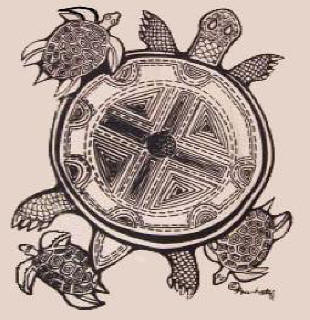 |
LITR 4326
Early American Literature Research Posts 2016 (research post assignment) Research Post 1 |
 |
Alexis Young
Mimesis and Imitation in Early American Literature
I have crossed paths with the concept of mimesis twice: first, in a
Shakespearian literature course and later, in a Renaissance poetry course. While
I know the basics of mimesis, imitation and some connections to Shakespearian
and Renaissance literature, I had never considered the role that the concept of
literary imitation played into early American literature. I wanted to research
literature and authors within the courses time period in order to learn more
about the mimetic qualities and how the literature was affected.
The article “Nature in Early American Literature” assesses the many factors that
influenced the type of diction and level of exaggeration found within the
literature. It explains the evolution of literature, along with society, by
evaluating multiple pieces of literature from authors in various locations over
a period of time. For example, the article explains how travelers were compelled
to exaggerate because of the expectations others had of their travels, causing
the book to be inaccurate, but still becoming an important part of early
American history. The article does a great job of illustrating the result of
early American “mimesis” attempts through a wide analysis and much support.
The article “Democratic Origins and Revolutionary Writers, 1776-1820”
illustrates the struggles of early American writers and their product. It
compares and contrasts English writers to early American writers by realistic
description of the jobs. For example, it explains how the American writers,
separated from England, did not have modern publishers, an audience, or any
legal protection, and that the job did not pay. It describes how many of the
first writers would copy English best sellers or imitate English works in their
own literature, before mentioning Charles Brockden Brown’s individual effect on
early American literature, along with others. The article effectively explains
why inaccurate imitation was originally found in the earliest literature, but
led to a stronger mimetic concept.
In Benjamin Crawford’s thesis, “Mimetic Removal in Early National Poetry,” a
thorough analysis of Native American culture and identity is assessed by means
of removal by American literature. He draws from many texts, even some we have
discussed in class. I realized that early American’s actions negatively impacted
Native American life, but I never knew it went to a literary extent. His thesis
clearly illustrates literary discourse and the negative impact it had on Native
American culture via, what he calls, mimetic removal.
Matthew Trcezinski’s first research post, “Charles Brockden Brown: Father of the
American Novel” gives a basic understanding of Charles Brockden Brown and his
impact on American literature. While it does not touch on mimesis, his research
post clearly explains how Brockden Brown’s work influenced Edgar Allan Poe. His
post illustrates the idea of imitation within early American literature and
opens the door to a less common concept.
Throughout my research on mimesis in early American literature, I have found
that the topic is very broad and a more specific, equally efficient impact can
be found by researching imitation within the literature. Early American settlers
were heavily influenced by their ties to England, which caused their literature
to reflect their teachings and expectations. Later in American literature, some
texts attempt to completely denounce Native American culture through mimetic
removal. As time goes on, my research lead me to writers such as Charles
Brockden Brown, who were beginning to think outside of the box and actually
imitate their new lives and surroundings and put it into their writing. Next, I
will focus my research on the writers that began to imitate early American
culture in their literature.
Sources
Crawford, Benjamin. “Mimetic Removal in Early National Poetry.” Baylor
University. 28 Feb. 2016. Web. <
https://baylor-ir.tdl.org/baylor-ir/handle/2104/8533>
Trcezinski, Matthew. “Charles Brockden Brown: Father of the American Novel.” 29
Feb. 2016. Web. <
http://coursesite.uhcl.edu/HSH/Whitec/LITR/4231/models/rp/rp2014/rp1/rp1Trcezinski.htm>
VanSpanckeren, Kathryn. “Democratic Origins and Revolutionary Writers,
1776-1820.” U.S. Department of State. 27 Feb. 2016. Web.
http://iipdigital.usembassy.gov/st/english/publication/2008/05/20080512214631eaifas0.6697046.html#axzz41xGFOn1H
Whitcomb, Selden L. “Nature in Early American Literature”. The Sewanee Review
2.2 (1894): 159–179. 28 Feb. 2016. JSTOR.
|
|
|
|


